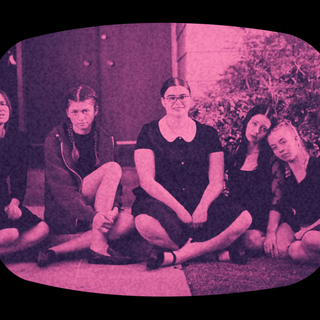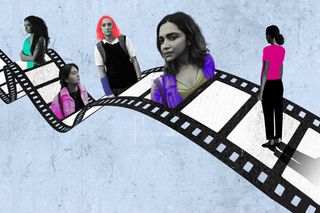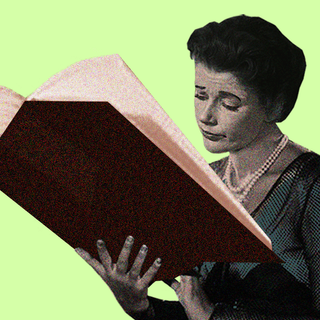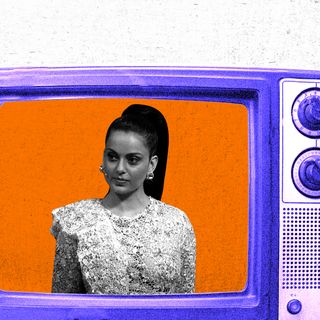
How the Pandemic Generation Became Disillusioned With the Coming‑of‑Age Genre
When chaos reigns, people may find internal space to confront themselves outside the oppressive gaze of who they are meant to be.

Ankita remembers the story Ved, the main character from Tamasha, narrates to a dark room: Once upon a time, there was a hero who did exactly what he was supposed to do. He studied engineering, buckled down a job. And he died soon after.
Then, Ved says with a wry smile, “Pasand nahi aayi ending? Toh badal do.” If you don’t like the ending, simply change it.
But Ankita could never be like Ved. It is evening, the third month of the first year of the pandemic. The 31-year-old is stuck in a room, watching someone find himself.
***
From Wake Up Sid! (2009) to Lady Bird (2017), a coming-of-age saga is formulaic in its arc. The protagonist in question matures, socially and emotionally; they experience a turning point or a major milestone; they transition into adulthood with this wisdom of the “one true self” thus preserved. These narratives paint a rather hopeful picture of growing up — the sharp-pointed knife of age carves the best in us.
In her 2018 book, author Soňa Šnircová emphasizes markers of people aging: “giving the protagonist’s agency, self-reflection, and eventual reintegration with society.” Career, relationships, and personhood are all Tetris-like pieces, bound to fall into place soon. Take the Bennet sisters in Pride and Prejudice or Aamir Khan’s character in Dil Chahata Hain (2001). In Queen (2013), Rani acts upon her emotional upheaval by traveling to Europe and meeting new people there – an odyssey of self-discovery.
In all these narratives, there is a presupposition that the individual has the freedom to explore – the self and the world.
But coming of age now – in the shadow of a pandemic and social uncertainty – means there is no “end goal” or closure in sight – let alone the freedom to explore oneself or the world. “Who am I going to be, they wonder, before I’ve missed my chance?” as writer Caitlin Quinlan puts it, speaking of an impossible question that haunts a pandemic generation.
Related on The Swaddle:
With the Pandemic in an Endless Loop, What Does Closure Mean?
Unlike Rani, a broken heart during the pandemic cannot be left behind with the help of adventure and others.
***
In the spring of 2020, Neha Chandra lost a friend to cancer. Some months later, she broke up with her partner. A few weeks later, the second wave of the pandemic barreled through. The 26-year-old had just been beginning to make sense of her life when meaning was chased out of her surroundings. Distracting herself wasn’t an option, neither was seeking out new experiences. “I tried to seek it through different people who were emotionally unavailable. I think that put me in a really bad shape – it has almost taken a year to recover from that.”
With loneliness and grief taking center stage, the coming-of-age arc feels especially out of context during the pandemic.
If the world fails to offer freedom and formative experiences, the quest for personal identity becomes rudderless, as evidenced by the ill-famed “lost generation” of the pandemic.
Author Kennel Millard notes that a new place – ideologically, geographically – “is coterminous with a significant new sense of self; it is the structure of ‘born again’.” The new sense of self surely doesn’t fit the collective, messy arcs of life today, when most 20- or 30-year-olds tussle with the feeling of “being stuck.” When Deepika Padukone whispers “I feel stuck” in Gehraaiyaan (2022), S’s* heart leapt at the truth. It felt like Padukone’s Alisha was speaking directly to the 23-year-old who had spent two years in a lockdown.
***
But the paradox of “finding oneself” during a period of restrictions has some promise.
For one, it breaks away from the strong focus on social conformity which coming of age and, subsequently, adulthood narratives anchor themselves on. The term “Bildungsroman” genre of coming-of-age was popularized by Johann Wolfgang von Goethe, who wrote of a protagonist who was tasked on two fronts: finding himself (self-integration) and conforming to the ways of the society. Self-integration thus went hand-in-hand with social integration. “The Bildungsroman is concerned predominately with leading the protagonist (and the reader) into his productive societal place,” Wilhelm Dilthey noted.
Related on The Swaddle:
The Season 2 Finale of ‘Euphoria’ Is a Tale of Innocence Lost
“I don’t know if it is because of the pandemic, but I got a chance to embrace who I am. I feel I’m in charge of my happiness and no one else comes before me,” Neha says. “I was doing things before to impress the outside world or do things for other people – to share a constructed idea of who we are. But now, everything I’m doing without thinking about others — it is for me.”
There seems to thus be a collective shift to viewing people’s personal journeys as important as their social ones. There is then an air of defiance in focusing on self-integration only, subverting what “adulthood” conventionally means. In The Worst Person in the World, the epilogue shows a character still figuring out her life at the dawn of her 30s, still not quite where the world wants her to be. Her journey is more inward, less turbulent.
The pandemic has perhaps allowed others like her space to confront themselves outside the oppressive gaze of who they are meant to be.
Further, coming-of-age signals a comfortable order, where adulthood can neatly spring from a starting point. “The pointedness and singular rush of these [movie] scenes stem from the characters’ desire to finally gain control of their self: to ‘grow up’ with one action or ultimate understanding,” Marina Benjamin argued in Aeon. But in the absence of a single definitive start during the pandemic, “growing up” becomes more about embracing uncertainty and chaos.
People meander through their lives; as do their emotions, their choices, their fears. This best comes alive on screen through a sense of blurry motion in the pandemic era of coming-of-age films. Someone is always running in Licorice Pizza (2021), the Worst Person In the World (2021), Gehraaiyaan – the shots feel like an ode to people on the edge of transforming, but who are not quite there yet.
Importantly, the pandemic has muddied the idea of “one true self,” a fictive persona that needs to be found. “…the only ‘self’ we can be sure of is one that changes every second, our decisions and circumstances taking us in an infinite number of directions, moment by moment,” Benjamin conclusively notes. “And even if we think we have ‘found ourselves,’ this is no panacea for the rest of our lives.”
By focusing on stories that leave room for chaos and anxiety, the “coming of age” is redefined as a dynamic, non-linear process. No wonder the Worst Person in the World ends with the popular 1975 song Waters of March; the chaos in the song mirrors the chaos of growing up. Adulthood, then, is about “letting go [rather] than looking good,” as Glista notes.
Chaos is the script in our lives, if there ever was such a thing.
Saumya Kalia is an Associate Editor at The Swaddle. Her journalism and writing explore issues of social justice, digital sub-cultures, media ecosystem, literature, and memory as they cut across socio-cultural periods. You can reach her at @Saumya_Kalia.
Related


Is This Normal? “I Can’t Quit a Book Even After I’ve Lost Interest in It”
